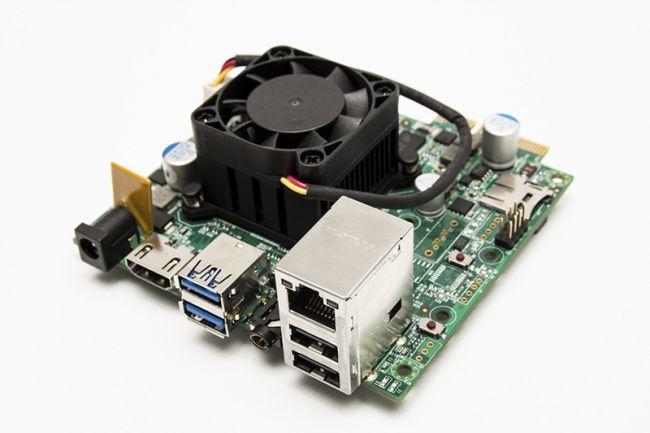
Now, GPU maker AMD is backing an interesting open-source option called Gizmo 2. Conceived by nonprofit development board community GizmoSphere, it’s meant to be used as a testing ground for new technologies and inventions.
A few of the use cases, or “experiments”, as detailed on GizmoSphere’s official product page, include network-connected media players, home automation systems, and Bitcoin miners. The designers insist that you let your imagination run wild, and view the Gizmo 2 as the stepping stone towards the future of computing.
Of course, there are performance limitations to take into account here, but compared to the Raspberry Pi, the Gizmo 2 is a powerhouse.
It’s pretty small, measuring 4 x 4 inches, yet it squeezes in a dual-core 1 GHz AMD embedded G-Series processor, and discrete AMD Radeon HD 8210E graphics. Plus, it includes 1GB of DDR3 RAM. There’s no reason to worry about power consumption, as the CPU/GPU combo eats up only nine watts.
Pictured above is a potentially noisy fan, but you can always remove it and rely on passive cooling. Gizmo 2 will be easily customizable once all the hardware schematics are shared with the community. The Gizmo 2 supports Windows 7 and 8, as well as Linux.
The Gizmo 2 impressively finds enough room to accommodate an HDMI port, a Gigabit Ethernet connector, a microSD card slot, and no less than four USB 2.0 ports. Clearly, this is way out of the Raspberry Pi’s league from a hardware standpoint, and the Gizmo 2’s price reflects that performance gap fairly accurately.
Whereas you can find a basic, low-end Pi for $20, the Gizmo 2 costs ten times as much. It will run you $200, and can be had from MCM Electronics, Semiconductor Store, or Newark Element14.
None of the retailers have the single-board computer/development kit in stock as of this writing, but it should be there in no time.


